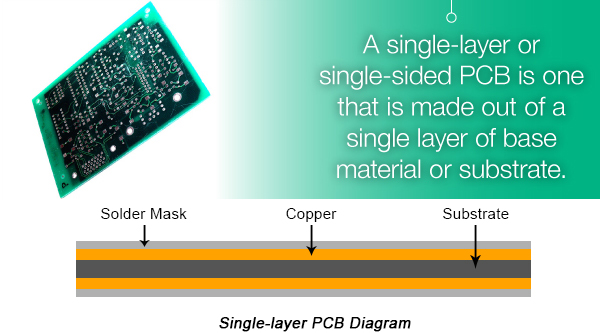
Īperture wheel - A component of a vector photoplotter, it is a metal disk having cut-outs with brackets and screw holes arranged near its rim for attaching apertures. An ASCII text data file which describes the size and shape of the apertures used by a photo plotter for any one photoplot. For example, laser photoplotters don't need to know whether an aperture is a flash or draw, so a modern-day aperture list might leave that datum out.Īperture list - 1. Some aperture lists leave out certain of those types of data.
#What does pcb stand for code
A line of textual data in an aperture list describing the index names (D code and position), the shape, the usage (flash or draw) and the X and Y dimensions of an aperture. A vector photo plotter plots images from a CAD database on photographic film in a darkroom by drawing each line with a continuous lamp shined through an annular-ring aperture, and creating each shape (or pad) by flashing the lamp through a specially sized and shaped aperture. An aperture is mostly opaque, but with a transparent portion that controls the size and shape of the light pattern. A small, thin, trapezoidal piece of plastic used to limit and shape a light source for plotting light patterns on film, and mounted in a mechanical disk called an "aperture wheel" which in turn is mounted on the lamp head of a vector photoplotter. The index of the aperture is its Position (a number used in an aperture list to identify an aperture) or D code. An indexed shape with a specified x and y dimension, or line-type with a specified width, used as a basic element or object by a photo plotter in plotting geometric patterns on film. These anodes are used to concentrate and accelerate the electron beam for focusing. In a cathode-ray tube, the electrodes connected to a source of positive potential. The positive element such as the plate of a vacuum tube the element to which the principal stream of electrons flows. Aluminum oxide (Al 2 O 3 )Īnalog circuit ? A circuit in which the output varies as a continuous function of the input, as contrasted with digital circuit.Īnode - 1.

It can withstand continuously high temperatures and has a low dielectric loss over a wide frequency range. Examples of active devices which fit one or more of the above definitions: transistors, rectifiers, diodes, amplifiers, oscillators, mechanical relays and almost all IC's (Contrast with passive component )ĪlN ?Aluminum Nitride, a compound of aluminum with nitrogen.ĪlN Substrate ?A substrate of aluminum nitride.Īlumina ?A ceramic used for insulators in electron tubes or substrates in thin-film circuits. Any device that switches or amplifies by the application of low-level signals. A device that requires an external source of power to operate upon its input signal(s). A component which adds energy to the signal it passes. Tight connections and Short Circuits Avoided.Active component - 1.They are made up of multiple layers and each layer has its own characteristics.Its surface mounted technology make components much smaller and assemble on both side of board.Its hall wall technology strengthens its ability.They get modified years after years and today they are used in many electronics devices. After world war 2, USA released the invention for commercial purpose. After that they were used by USA in world war 2 to make proximity fuzes. In 1936, Austrian engineer named Paul Eisler invented the printed circuit which is a part of a radio set when he was working in United Kingdom. Learn CS Theory concepts for SDE interviews with the CS Theory Course at a student-friendly price and become industry ready. Flip-flop types, their Conversion and Applications.Design 101 sequence detector (Mealy machine).Code Converters - BCD(8421) to/from Excess-3.Difference between combinational and sequential circuit.Code Converters - Binary to/from Gray Code.Difference between Unipolar, Polar and Bipolar Line Coding Schemes.
#What does pcb stand for full

ISRO CS Original Papers and Official Keys.GATE CS Original Papers and Official Keys.


 0 kommentar(er)
0 kommentar(er)
